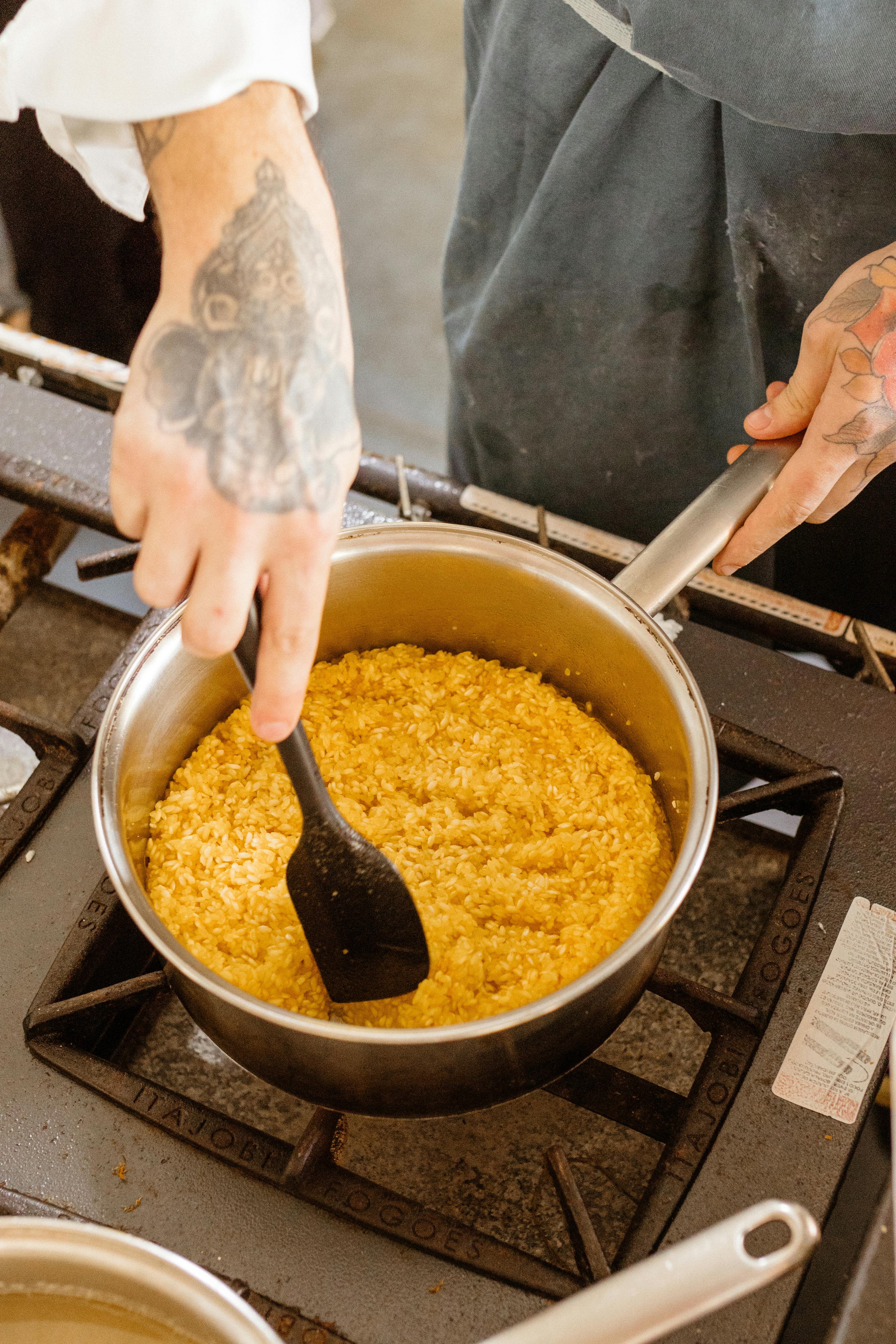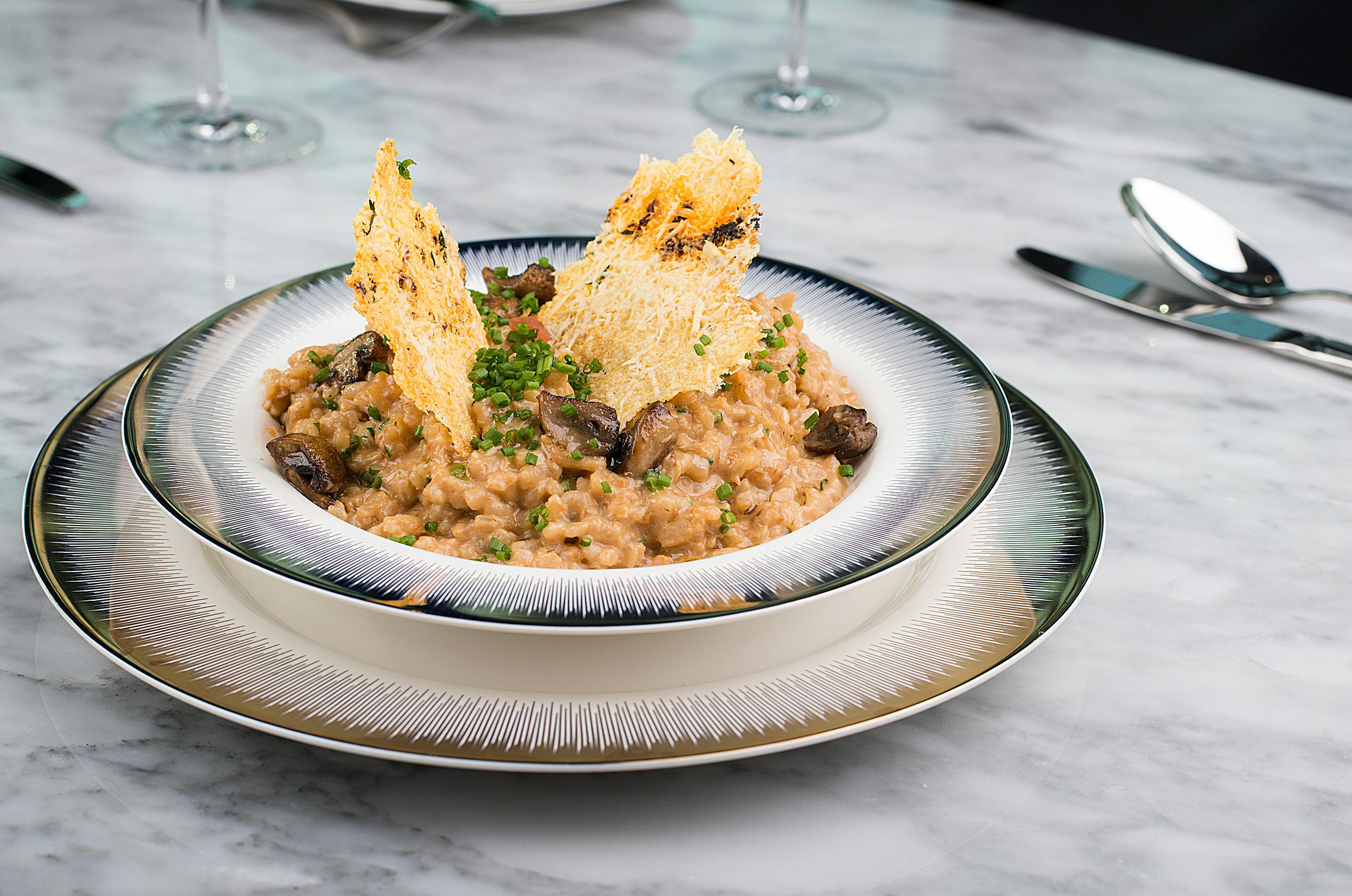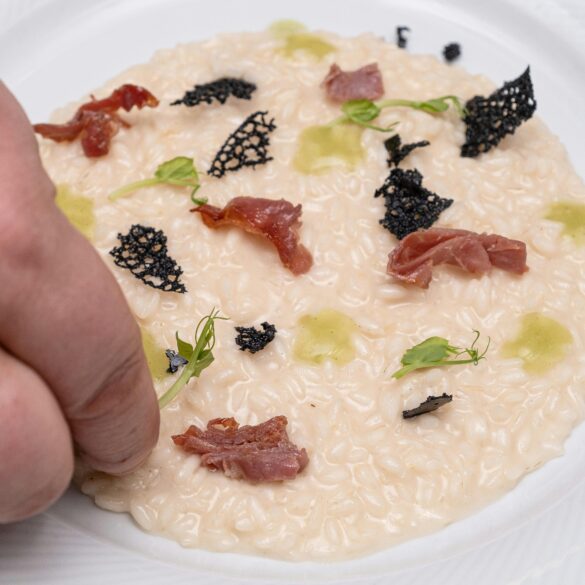Italy Risotto Secrets: Chef-Approved Skills for Instant Home Upgrade
If you’ve ever stared at a pot of mushy rice and wondered why your risotto tastes nothing like those silken, restaurant-perfect plates, you’re not alone. I’ve burned, undercooked, and—full disclosure—over-stirred more risotto than I care to admit. But something clicked about five years ago—a moment standing next to a grumpy Milanese chef in an impossibly cramped kitchen, watching him manage rice, broth, and timing with the relaxed precision of someone who’s made this dish twice daily since forever. In that instant, home risotto changed for me—and now I genuinely believe anyone can cook authentic risotto at home, provided they know a few non-negotiable secrets.1 What really strikes me is how much great risotto is about tiny details, not expensive gear or fancy ingredients; it’s what you notice after a hundred failures, a thousand spoons of tasting, and a lot of “wait, what just happened here?” moments.
Why Risotto Defines Italy’s Culinary Heart
Let’s zoom out for a second. Why are people so obsessed with risotto? Having spent summers wandering northern Italy, the answer feels pretty obvious—risotto is both endlessly variable and deeply comforting. It’s the dish locals demand for big family gatherings, and it’s just as likely to be a chef’s personal statement as a humble grandma’s midweek dinner.2 It originated in the fertile Po Valley, where short-grain rice flourished after centuries of canal-building and floodplain management. Risotto is “Italy’s hug in a bowl,” connecting north (Milanese saffron), south (seafood riffs), mountains (mushroom magic), and city cosmopolitans who demand a twist for every season.3
Funny thing is, most people outside Italy don’t realize how controversial risotto is among Italians. There’s endless debate about aborio vs. carnaroli, whether you finish with butter or cheese, and which regional version reigns supreme. Even professional cooks get passionate—sometimes downright bonkers—when defending their family’s tradition.4 That tells me, as a food writer and sometime home chef, that risotto carries more than just flavor; it’s real cultural pride, living history, and ongoing evolution all at once.
Foundations First: Essential Ingredients & Equipment
Let me step back for a moment and admit: I used to think you could “rescue” any risotto with extra cheese. Actually, what I should have done is pay closer attention to the base components and tools—because that’s where real magic begins.
- Rice Selection: Carnaroli (creamy yet resilient) wins most chef taste tests,6 though arborio and vialone nano have passionate fans for different reasons (abundance, cost, texture).
- Stock/Broth: Homemade, clear, unsalted vegetable or chicken stock is ideal—store-bought works in a pinch but never matches depth.
- Fat: Unsalted butter (for classic richness) or extra virgin olive oil (for lighter contemporary twists).
- Alliums: Finely diced white onion or shallots set the flavor foundation without overpowering.
- Finishing Touches: Parmigiano Reggiano, good white wine, and (sometimes) a final swirl of cold butter—chef tricks that transform texture.
Quite a few chefs skip garlic and overuse pepper, by the way. “Risotto is about elegance, not punch,” my mentor once sighed. Not that I always agreed, but nowadays I’m partial to letting the rice star.
Personal Insight: Ingredient Quality vs. Authenticity
While many modern home cooks reach for supermarket rice, what really makes an Italian chef’s risotto sing is ingredient provenance—traceable cheese, rice from respected mills, and real butter. I used to think small upgrades didn’t matter, but every Italian chef I’ve met insists otherwise.7 Here’s the thing: You don’t need rare specialty items for decent risotto, but if you want to jump to truly authentic flavor, focus on where things come from and how you treat them. That’s the genuine secret to instantly upgraded home risotto.
The Chef’s Timeline: Step-by-Step Risotto Mastery
I used to rush risotto, thinking it was less about patience and more about constant stirring. Actually, the process follows a timeline as precise as clockwork but as flexible as a jazz solo. Let that sink in for a moment—every chef I’ve interviewed claims “attention” outweighs “recipe.” The steps below reflect a blend of Milanese tradition and chef-approved customization.8
- Sauté aromatics: Start with onion/shallot in butter or oil until just soft—color should be pale, never browned.
- Toast the rice: Add rice and stir for 2-3 minutes until edges look translucent and smell nutty.
- Deglaze: Pour in dry white wine, stirring gently as alcohol evaporates. This adds brightness and depth.
- Gradual broth addition: Add warm stock ladle by ladle—never dump it in. Each scoop should be absorbed before the next arrives.9
- Constant attention, not stirring: Unlike popular belief, it’s better to stir gently every 20-30 seconds, not non-stop. Texture depends on control, not chaos.
- Final finish: At the end, fold in cheese, butter, and fresh herbs off the heat for glossy texture.
Did I forget to mention resting time? Actually, risotto benefits from a one-minute pause before serving—a subtle trick chefs use to let flavors meld and rice settle.10
Key Insight: Risotto as Science and Art
Here’s what gets me: Risotto isn’t just cooking; it’s a balance of temperature, hydration, and starch “creaming” you can feel in the spoon.11 A chef once told me, “Stir with intention, finish with heart.” To me, that means knowing just when to let rice absorb its last broth, and when to pull the pan before things go past creamy to gluey.
Mistakes That Matter—and Instantly Upgrade Your Game
I need to revise my earlier point about cheese rescuing everything. Truth is, the ten risotto mistakes below are common in home kitchens, and fixing even one can instantly upgrade your results. Last month, during a client recipe test, the difference between “meh” and “wow” came down to two simple adjustments.
- Overcooking rice: Rice should be “al dente” with a slight bite, not mushy. Taste early, taste often.
- Under-seasoning: Stock, not salt shaker, provides the backbone. Taste your broth first—fix it before it meets rice.
- Cold stock: Using cold liquid shocks the rice; warm broth maintains creamy consistency.12
- Stirring too much: Frantic stirring breaks grains and releases excessive starch—gentle agitation is best.
- Rushing flavors: Give aromatics and rice a real chance to develop—three minutes here pays off in flavor depth later.
- Skimping on fat: The final butter and cheese swirl isn’t optional, it’s the texture magic.
Why “Instant Upgrades” Really Work (and Why Most Blogs Miss Them)
To be more precise, what most recipe blogs miss is that upgrades aren’t just about cook time or adding truffle oil. It’s how you treat the rice, the temperature, and the tasting. I’ve made millions of tiny fixes after repeated small mistakes—a little extra broth here, a pause in stirring there. Each “aha!” moment adds up to transformative home cooking.
Cultural Connections: Risotto Across Italy’s Regions
Now, moving on to the cultural layer—because risotto isn’t just Milanese. Home cooks in Venice add seafood, Piedmont locals treasure mushrooms and red wine, and southern Italians swap in citrus or saffron for brightness.14 Here’s the thing: authentic upgrades start by embracing these regional twists, each rooted in landscape, history, and family lore.
| Region | Key Risotto Ingredient | Flavour Highlight | Signature Upgrade |
|---|---|---|---|
| Lombardy | Saffron | Golden color, floral aroma | Butter swirl & Parmigiano finish |
| Veneto | Seafood | Briny, delicate, fresh | Lemon zest or fresh herbs added last |
| Piedmont | Porcini mushrooms | Earthy, rich, umami | Red wine for depth |
| Sicily | Citrus & seafood | Bright, aromatic | Orange rind grated in |
Ever notice how the best risotto is never factory-perfect? Small variations—rice grown on different soils, cheese aged an extra month—make every bowl a little unique.

Recipe: Classic Milanese Risotto from Real Italian Chefs
I remember my first Milanese risotto lesson clearly—kitchen packed, chef’s voice booming over the clatter of twenty pans, “Don’t rush it!” What excites me about risotto alla Milanese is its deceptive simplicity. With only a handful of ingredients, the results hinge on technique. Whether you’re a beginner or a seasoned home cook, I promise: follow the steps below and you’ll leap past “good enough.”
Chef-Approved Milanese Risotto Recipe
- Ingredients: 1 ½ cups carnaroli rice, 6 cups hot chicken or vegetable stock, 1 small white onion (finely diced), 3 tbsp unsalted butter, 1 cup dry white wine, ½ tsp saffron threads, ½ cup grated Parmigiano Reggiano, salt to taste.
- Step 1: Sweat onion in 1 tbsp butter on low heat—don’t brown. Add rice, stir until translucent.
- Step 2: Deglaze with wine, let alcohol evaporate. Stir in saffron and half the stock.
- Step 3: Add stock, half a ladle at a time, stirring gently after each addition.
- Step 4: When rice is “al dente” and mixture creamy (18-20 mins), remove from heat. Fold in remaining butter and cheese for classic “mantecatura.”
- Step 5: Taste for salt. Rest one minute. Serve on warm plates, spreading risotto thinly (“all’onda”—it should ripple like waves).
I’m still learning nuances—sometimes I swap out the wine for a splash of Marsala, other times I add a pinch of nutmeg for warmth. The jury’s still out on which is “best”—it’s worth experimenting.
Timing, Tasting, and Home Adjustments
Let me clarify: risotto’s doneness is personal. Some prefer toothsome grains, others go creamier. What I’ve found is that timing matters most—but don’t get too hung up on minutes. Taste constantly. Every chef told me, “Trust your spoon, not your timer.” That’s the single biggest home-cook upgrade. What puzzles me sometimes is how quickly risotto goes from perfect to overdone. It’s fine—just learn, adjust, and keep going.
- Beginner tip: Set up all ingredients before you start—mise en place is your safeguard.
- Intermediate tip: Adjust heat to maintain a gentle simmer, not a full boil.
- Expert move: Add a splash of reserved stock just before serving for restaurant-style “wave” texture.
Sometimes I get impatient—don’t. Resting risotto for a minute off heat changes the texture from sticky to glossy. Let the grains settle before plating. Taste, adjust, repeat.
Troubleshooting Table: Fixes for Every Home Cook
Ever ruined a risotto by rushing, under-seasoning, or getting lost in conversation? Sound familiar? Here’s a table I wish someone gave me ages ago:
| Problem | Cause | Chef’s Fix | Instant Upgrade |
|---|---|---|---|
| Sticky, gluey texture | Over-stirring, too much starch release | Stir less; use wider pan next time | Add splash hot stock before serving |
| Rice undercooked | Heat too low, not enough stock | Keep heat to gentle simmer; taste every 3 mins | Simmer extra broth, finish “al dente” |
| Flat flavor | Weak stock, under-seasoning | Season stock before starting | Fold cheese and butter at end |
| No creaminess | Wrong rice, not enough “mantecatura” | Use carnaroli or vialone nano | Add more butter and cheese (off fire) |
I’ve learned most kitchen disasters are fixable—sometimes they even inspire a new flavor variation. Don’t panic; adapt!
Call to Action: Try the “Wave Test” Tonight
This excites me since it’s a true chef move: when you plate your risotto, spread it thin and see if you can create a gentle ripple (“all’onda”). If so, you’re in the club. Share your results (and failures!) with friends and let the feedback make you better.
Home Chef Q&A: Expert Opinions & FAQs
Okay, let’s step back. What questions do real home cooks ask Italian chefs? At least four times a year, I get frantic texts from family, friends, and work colleagues—“Is risotto supposed to be soupy?”, “Can you make risotto ahead?”, “Do you need fancy rice?” Here are answers straight from professional kitchens, plus my own take:
- Q: Can risotto be made in advance? From my perspective, no. Risotto should be served immediately for creamy texture, though leftovers work fine for arancini (fried rice balls).
- Q: Is risotto meant to be soupy? Short answer: No. “All’onda” means gently rippling, spread thin, never soupy.
- Q: Can I substitute rice types? You can, but expect textural changes. Arborio, carnaroli, and vialone nano each have unique strengths.
- Q: Butter or oil for sauté? Butter for classic richness; oil for lightness. Sometimes a blend works best—a matter of taste and health.
- Q: Do I need fresh stock? Ideally, yes. But in real life, high-quality boxed stock is a reasonable shortcut—just taste and adjust.
What really strikes me is that most chefs encourage experimentation—try herbs, play with mushrooms, swap cheeses. The upgrade comes not from perfection, but from persistence and curiosity.8 Plus, as someone who’s failed more attempts than succeeded, I say: Don’t fear mistakes. Embrace them.
Evergreen Principle: Risotto Evolves as You Cook It
Your “perfect bowl” will change with season, mood, and skill. It’s less about rigid tradition and more about adaptive learning. Don’t just cook risotto—explore it.
References
Works Cited & Further Reading



